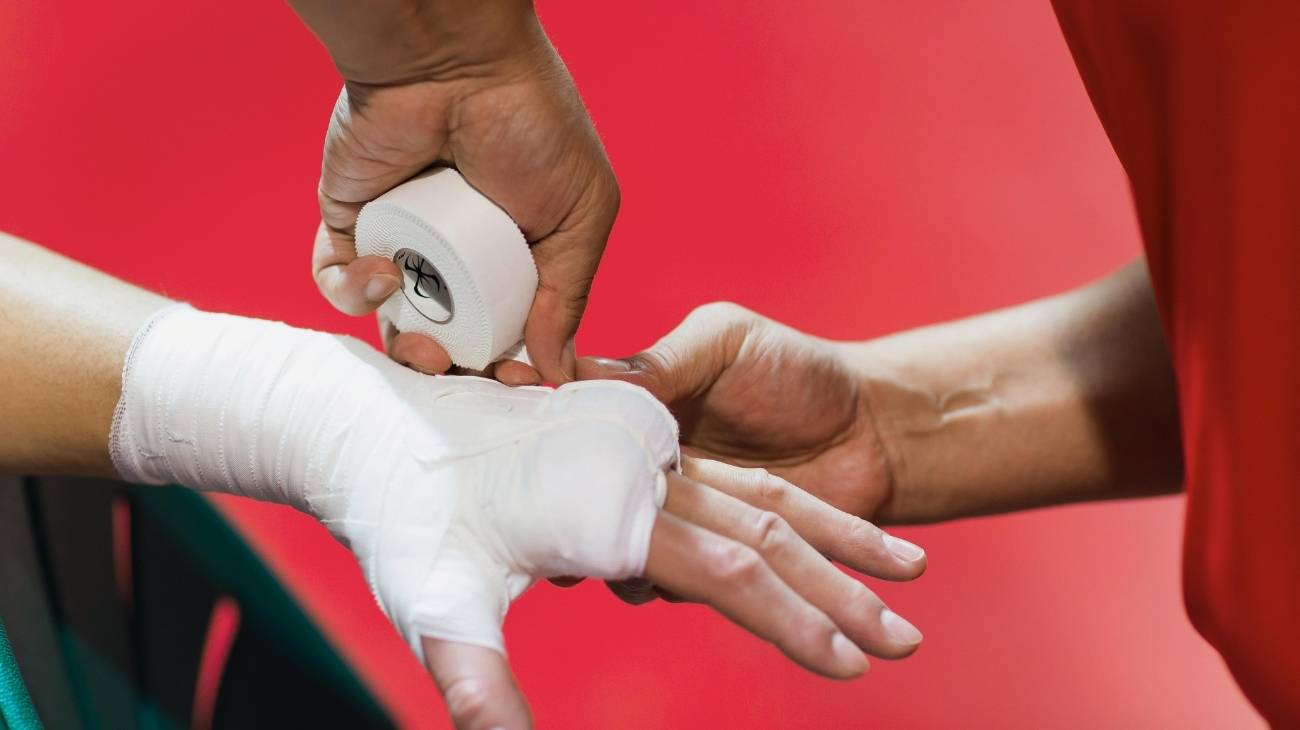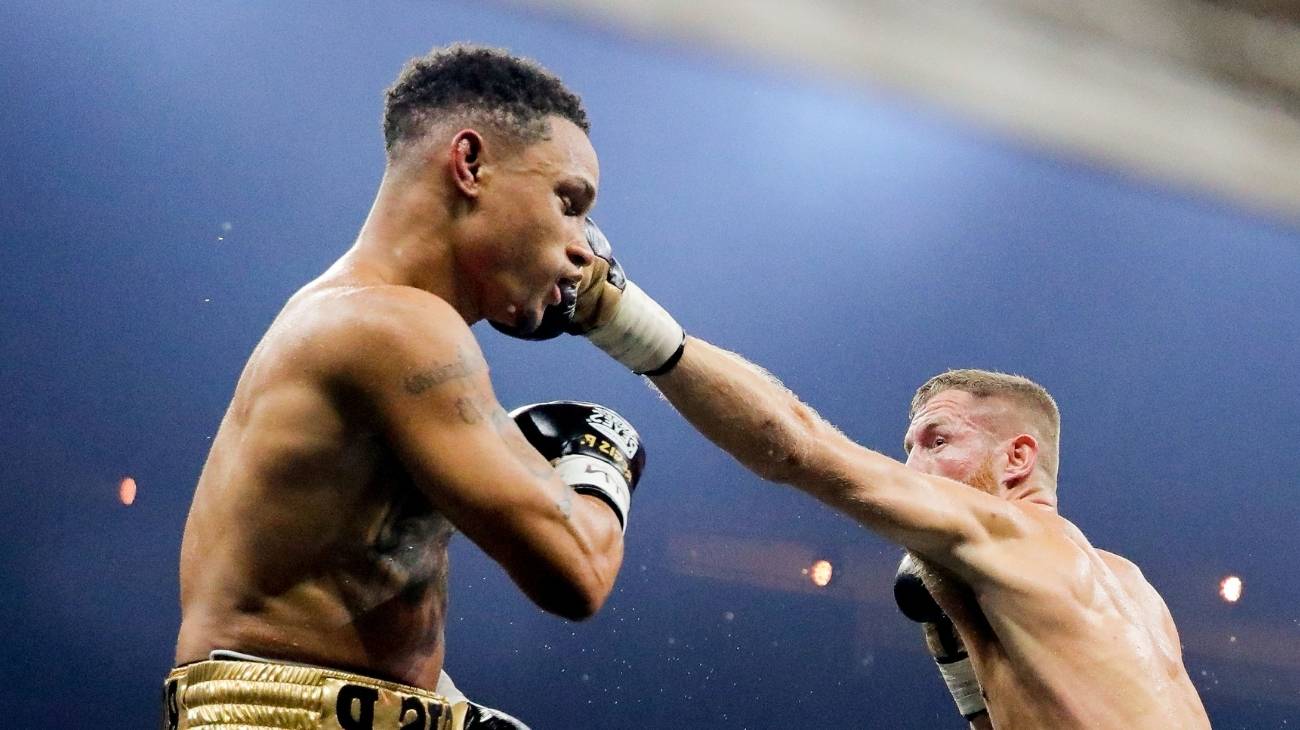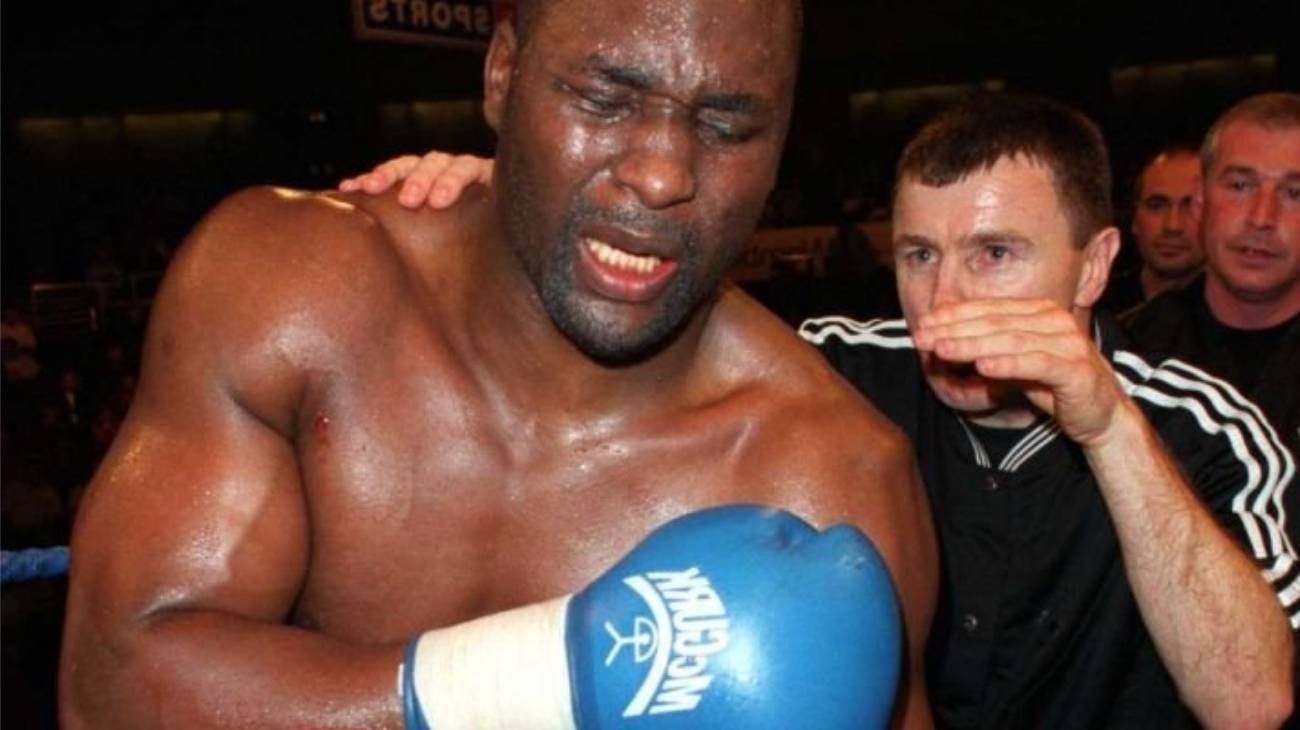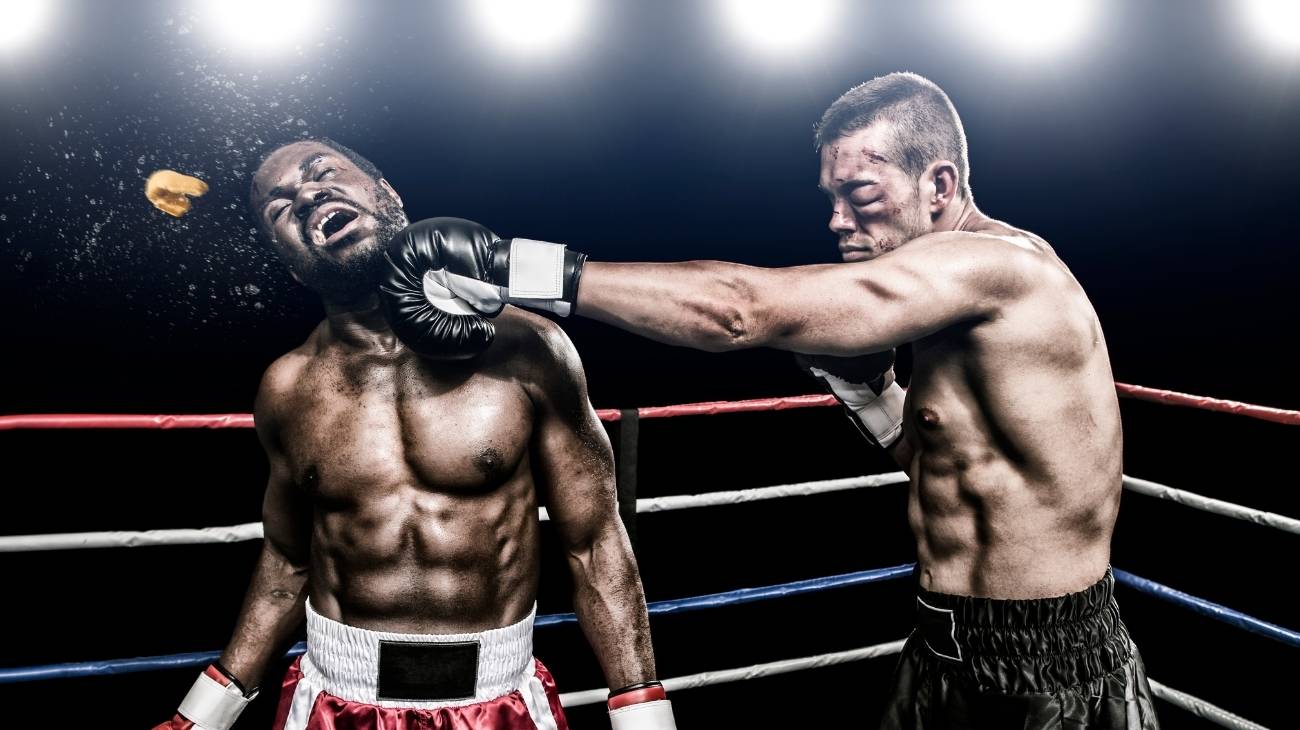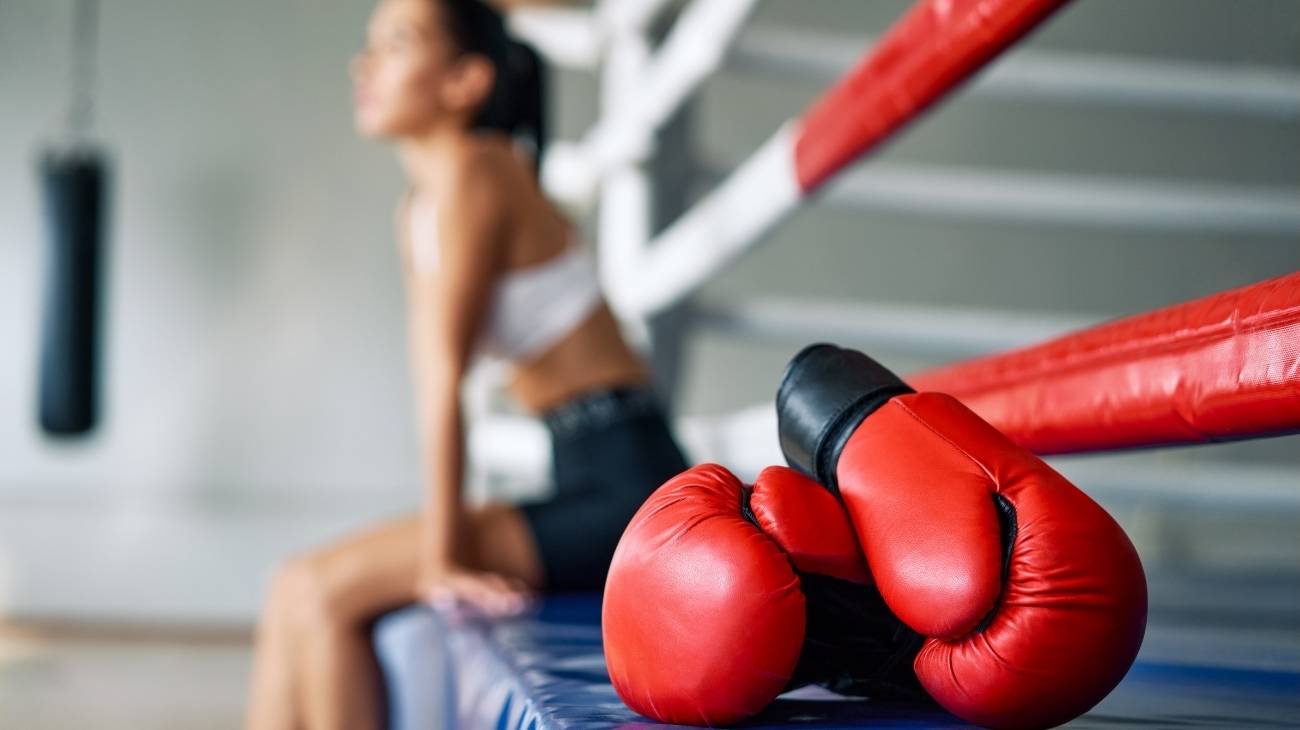Among the most dangerous contact sports are boxing and Mixed Martial Arts (MMA). A boxer, on average, has a 7.1% chance of losing consciousness in the ring.
During an investigation, the University of Gothenburg, in Sweden, determined that the neuronal damage from blows received while boxing remains over time more than previously thought. Check out this list of the most common injuries to the boxer's head, neck and face.
What are the most common types of neck and facial injuries in combat sports like boxing?
Among the most serious injuries can be eye damage, including retinal detachment. Now that you're on your way to becoming a great boxer, here are the most common neck, face and head injuries:
Neck discomfort
The work of throwing a punch is supported by the muscles that stabilise the neck and these muscles become exhausted, and are complicated by not warming up properly. When we don't pay attention to the discomfort, the cervical joints end up being affected as well. Who are the most prone boxers? Those who are just starting out in this career and those who are coming back from a long break. It is a matter of training and preparing the body to avoid this type of cervical discomfort.
CPS or whiplash
This is an abrupt transfer of energy most commonly associated with vehicle collisions. The force generated by a boxing punch resembles this collision and generates this "whiplash". This leaves soft tissue damage that can even lead to cervical sprain. CPS has four degrees, ranging from mild pain and stiffness to reduced reflexes and dislocations. Fractures of the cervical bones are rare in boxing, but should never be ruled out.
Concussion
A silent enemy of every boxer, it can occur from a single hard, lethal blow or from several repeated blows. When the brain is concussed, headaches, blurred vision, emotional lability, loss of concentration, amnesia and imbalance occur. It is a risk because the symptoms do not usually appear immediately, but over a period of months, which encourages the damage to develop into nerve diseases such as Parkinson's disease.
Retinal detachment
Constant blows to the face can cause retinal detachment, making it almost impossible for the boxer to see during the fight. This is a very common injury as it is the area most likely to be hit in order to generate concussions that end the fight by knockout.
Although it is a serious problem, it is not usually a reason to stop the fight even though it completely limits the fighter' s vision and reflexes.
Cauliflower ear
This is a large bruise due to the injured ear not being properly addressed in the first few minutes. When the blood accumulated in the earlobe is not drained properly, the body activates a local inflammatory reaction in an attempt to reabsorb the blood. In this case, more collagen production is generated and stored in the area and thickens it.
Nasal fracture
A direct blow to the nose causes 46% of fractures in boxing. The nose becomes swollen and causes the boxer to have to be treated in the breaks between rounds. To help stop the bleeding, it is often enough to simply press on the nose at the level between the eyebrows.
Best products for the recovery of neck, head and face injuries in boxing
Bestseller
-
Acupressure Mat and Pillow (Black/Gray)
£44,95 -
Acupressure Mat and Pillow (Green/Navy)
£44,95 -
Acupressure Mat and Pillow (Pink/Bordeaux)
£44,95 -
Acupressure Pillow (Black/Gray)
£21,52 -
Acupressure Pillow (Green/Navy)
£21,52 -
Acupressure Pillow (Pink/Bordeaux)
£21,52 -
Ice Massage Roller Ball (Black)
£34,95 -
Ice Massage Roller Ball (Green)
£34,95 -
Ice Massage Roller Ball (Pink)
£34,95 -
Microwave Wheat Bag for Neck & Shoulder Pain Relief (Hearts)
£21,50 -
Microwave Wheat Bag for Neck & Shoulder Pain Relief (Oxford)
£21,50 -
Microwave Wheat Bag for Neck & Shoulder Pain Relief (Sport)
£21,50 -
Microwave Wheat Bag for Neck Pain Relief (Hearts)
£17,50 -
Microwave Wheat Bag for Neck Pain Relief (Oxford)
£17,50 -
Microwave Wheat Bag for Neck Pain Relief (Sport)
£17,50 -
Microwaveable Wheat Bag for Pain Relief (Hearts)
£17,50 -
Microwaveable Wheat Bag for Pain Relief (Oxford)
£17,50 -
Microwaveable Wheat Bag for Pain Relief (Sport)
£17,50 -
Shoulder Support Brace (Black)
£21,95 -
Shoulder Support Brace (Green)
£21,95 -
Shoulder Support Brace (Pink)
£21,95 -
Trigger Point Massage Stick (Black)
£12,95 -
Trigger Point Massage Stick (Green)
£12,95 -
Trigger Point Massage Stick (Pink)
£12,95
How to apply the RICE therapy to treat facial injuries in boxing?
Poor medical care at the time is a reason for the boxer to have major complications in his career due to cervical bruises, fractures and retinal detachment. That is why we tell you how to learn the PRICE therapy, an update of RICE as this assistance is known in the world.
- Protection: Most therapies of face protection consist of gauze and adhesives, but these are almost always applied at the end of the fight.
- Rest: After a fight, the cervical area should be given absolute rest, as this is the area that suffers most from the constant blows we receive to the face.
- Ice: From this step onwards there should be as much concentration as possible as ice will reduce pain, minimise inflammation and allow the tissues to regenerate to a large extent. When the nose is fractured, ice should be applied immediately, as well as in lobe injuries. Ice serves as an analgesic and is more useful in boxing than in other lower intensity sports.
- Compression: Usually applied in cases of a broken nose, pressure at eye level helps to prevent blood flow and reduce swelling. Combined with ice, it reduces pain and allows time for the boxer to receive more specialised assistance.
- Elevation: In both nose fractures and severe blows to the eyebrows, the head should be raised while vision is regulated and retinal detachment is ruled out. In the case of nosebleeds, the blood flow is reduced when the gaze is directed towards the ceiling.
References
- Gambrell, R. C. (2007). Boxing: medical care in and out of the ring. Current sports medicine reports, 6(5), 317-321. https://link.springer.com/article/10.1007/s11932-007-0069-9
- Walilko, T. J., Viano, D. C., & Bir, C. A. (2005). Biomechanics of the head for Olympic boxer punches to the face. British journal of sports medicine, 39(10), 710-719. https://bjsm.bmj.com/content/39/10/710.short
- Zazryn, T. R., McCrory, P. R., & Cameron, P. A. (2008). Neurologic injuries in boxing and other combat sports. Neurologic clinics, 26(1), 257-270. https://www.sciencedirect.com/science/article/abs/pii/S0733861907001272
- Bartsch, A. J., Benzel, E. C., Miele, V. J., Morr, D. R., & Prakash, V. (2012). Boxing and mixed martial arts: preliminary traumatic neuromechanical injury risk analyses from laboratory impact dosage data. Journal of neurosurgery, 116(5), 1070-1080. https://thejns.org/view/journals/j-neurosurg/116/5/article-p1070.xml
- Gurdjian, E. S., Lissner, H. R., & Patrick, L. M. (1962). Protection of the head and neck in sports. Jama, 182(5), 509-512. https://jamanetwork.com/journals/jama/article-abstract/333802
- Loosemore, M., Lightfoot, J., Palmer-Green, D., Gatt, I., Bilzon, J., & Beardsley, C. (2015). Boxing injury epidemiology in the Great Britain team: a 5-year surveillance study of medically diagnosed injury incidence and outcome. British journal of sports medicine, 49(17), 1100-1107. https://bjsm.bmj.com/content/49/17/1100.short
- Gartland, S., Malik, M. H. A., & Lovell, M. E. (2001). Injury and injury rates in Muay Thai kick boxing. British journal of sports medicine, 35(5), 308-313. https://bjsm.bmj.com/content/35/5/308.abstract
- Gissane, C., White, J., Kerr, K., & Jennings, D. (2001). An operational model to investigate contact sports injuries. Medicine and Science in Sports and Exercise, 33(12), 1999-2003. https://europepmc.org/article/med/11740290
- Tjønndal, A., Haudenhuyse, R., de Geus, B., & Buyse, L. (2022). Concussions, cuts and cracked bones: a systematic literature review on protective headgear and head injury prevention in Olympic boxing. European journal of sport science, 22(3), 447-459. https://www.tandfonline.com/doi/full/10.1080/17461391.2021.1872711
- Jayarao, M., Chin, L. S., & Cantu, R. C. (2010). Boxing-related head injuries. The Physician and Sportsmedicine, 38(3), 18-26. https://www.tandfonline.com/doi/abs/10.3810/psm.2010.10.1804




































